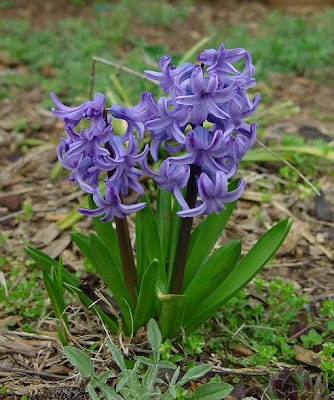
FAMILY LILIACEAE
The Dutch hyacinth is one of the best known, and widely grown, spring bulbs; everyone with any interest in pot plants must have grown one at one time or another. The species was being grown in Europe as early as the sixteenth century, and found
particular favour in the Netherlands, with the result that the Dutch became specialists in the growing and raising of new varieties, and a large nursery industry became established, which flourishes to this day.
The cultivation of Dutch hyacinths is comparatively simple, but there are one or two important points to watch if you wish to ensure that your efforts meet with success. The usual time to start the bulbs into growth is autumn for flowering sometime during the period mid-winter to early spring. You can buy Christmas-flowering hyacinths, which are bulbs that have been specially treated, and these should be potted in late summer. It is important not to mix different colours, of which there is quite a wide range mostly in shades of reds and blues. When potting two or more bulbs together in the same bowl, make sure the bulbs are all the same variety and, if possible, all the same size. The purpose of this is to produce a bowl of hyacinth
with flowers all in bloom at the same time. You have a wide choice of composts, none of which is better than another, but if you wish to grow hyacinths in bowls without any drainage holes it is better to use either bulb fibre or a soilless compost.
Alternatively you can grow the bulb in water, for which purpose special glass vases are made. A good method to use for potting hyacinths is to put a layer of compost in the container, then place the bulbs on this, as far apart as the container will allow. Ensure that there is space between the bulbs and that they are not touching each other, then press compost down around the bulbs, leaving about Уг in (13 mm) of the tip of the bulb above the compost. Give the compost a good watering and allow the surplus water to drain away. When planting in bowls, the way to do this is to hold the bowl at the steepest angle that the contents will allow without spilling out of the bowl; this causes the excess water to appear at the end of the bowl. When watering hyacinths in bowls, which do not have any drainage holes, it is rather difficult to know whether you have overwatered, and you should use this method to check.